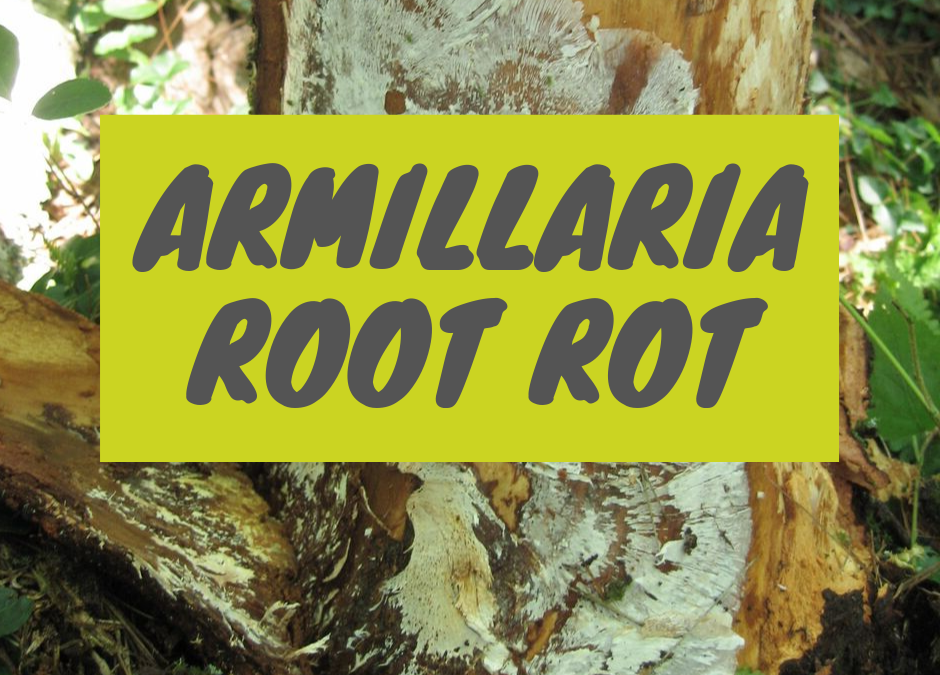Attacking both living and dead trees, Armillaria Root Rot is a fungus that homeowners should to be aware of so they can protect the life of their trees.
What is Armillaria Root Rot:
Armillaria root rot is one of the many micro-organisms that naturally decay stumps and roots of trees.
How to identify the fungus?
While growing on a dead stump, Armillaria produces root-like structures called rhizomorphs which can grow into the soil. The fungus can reach up to distances of up to 60 feet from an infected stump. Also, this disease spreads primarily by root-to-root contact or by root-like fungal strands.
How does it spread?
Growing through the soil, root-like fungal strands adhere to the host roots that it encounters. It’s been reported to infect over 25 species of ornamental trees and shrubs. In addition, multiple species of fruit and nut trees, ornamentals, and herbaceous plantings are affected by the fungus. Especially prevalent on oak, the fungus is often referred to as oak root rot fungus.
Plants Resistant to Root Rot:
Plants reported by Auburn University to be resistant to Armillaria root rot include: ginkgo, tulip tree, ash, bald cypress, cherry, Chinese elm, Chinese pistache, crabapple, cryptomeria, dawn redwood, eucalyptus, hackberry, holly, incense cedar, Leyland cypress, maidenhair tree, maple, privet, smoke tree, sweetgum, tree-of heaven, white fir, and wisteria.
Death by Armillaria:
Trees successfully attacked do not die until infections wrap around the base of the tree; yet, they can grow progressively weaker as their roots are killed and eventually become subject to windthrow (trees uprooted or broken by wind).
Trees that are 15–20 years old are more tolerant to attack. On healthy, vigorous trees, Armillaria is not lethal, but if present, it may begin to grow when the tree dies of other causes. Young, and small trees are more likely to be killed by Armillaria.
Trees die from Armillaria when: it completely surrounds a tree’s trunk, weakens a trunk so badly that it breaks, and causing a tree to fall over due to loss of its roots.
How to Spot Armillaria Symptoms:
Follow these steps to check for Armillaria: First, gently remove the bark from the root collar area of a suspicious-looking tree. See if height growth is reduced, foliage is sparse, and leaves that remain on plants are stunted and yellow. Next, Look for a dense, white “mat” of fungal tissue growing between the bark and the wood.
The most distinctive sign of Armillaria infection is the honey-colored mushroom that grows from the infected roots and base of plants. One can find these mushrooms usually in the late summer and fall. The mushrooms may have stalks 4 to 6 inches high with caps 1 inch high and 2 to 4 inches wide.
How to Treat Armillaria:
The following are suggested possible treatments:
1. Remove and destroy infected material (Organic Option). Remove as much of the stump as possible. Sterilize tools with a solution of 1–part bleach with 9–parts water after use.
2. Provide adequate moisture in well-drained soil to maintain vigor and resistance to infection. Plants suffering from drought are extremely susceptible to infection. Fertilize trees appropriately in late winter or early spring.Organic tree fertilizers are available and could be a viable organic approach for this strategy.
3. No effective chemical controls are known (Organic Option). Plants resistant to Amillaria root rot should be considered for replacement of diseased trees. New soil should be used to amend the planting site. All diseased material and associated roots, as much as possible, should be excavated before replanting.

